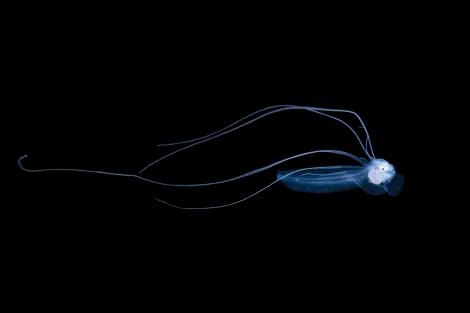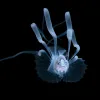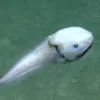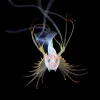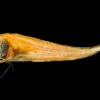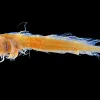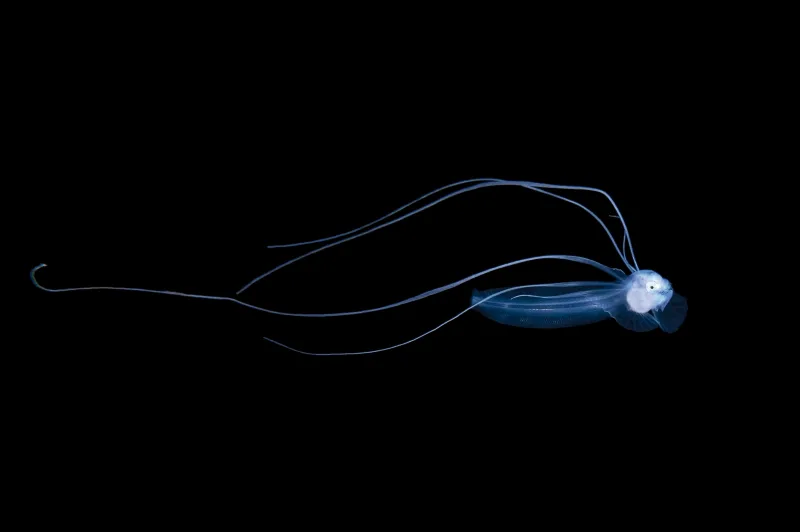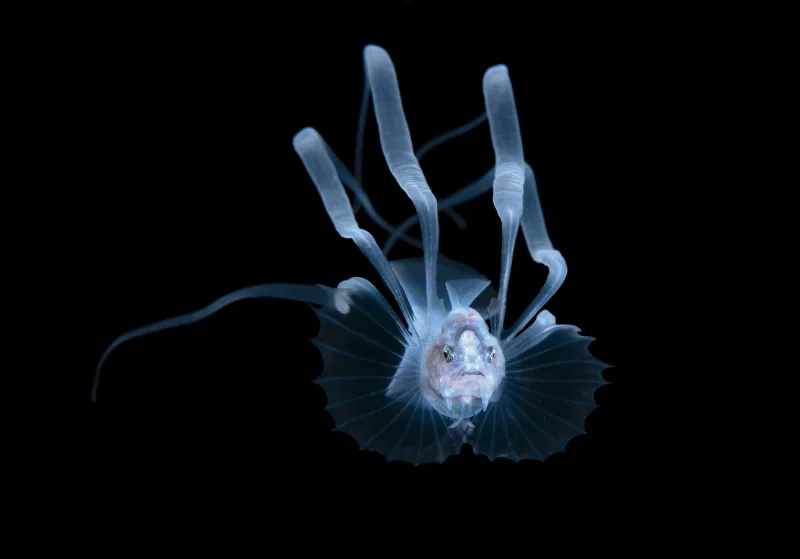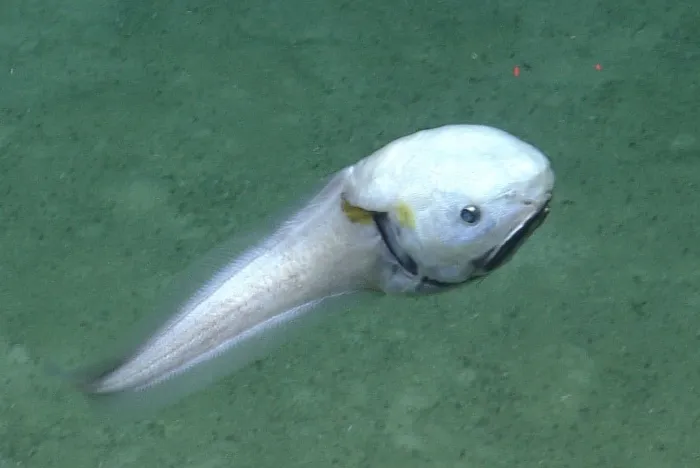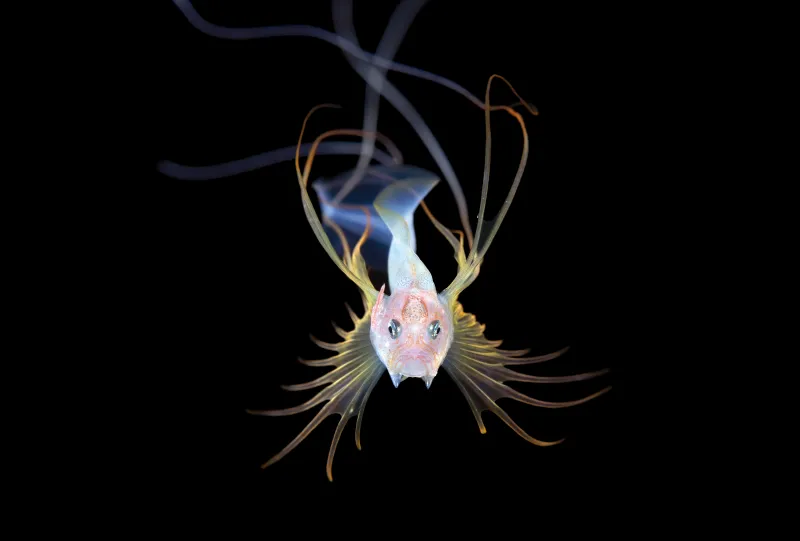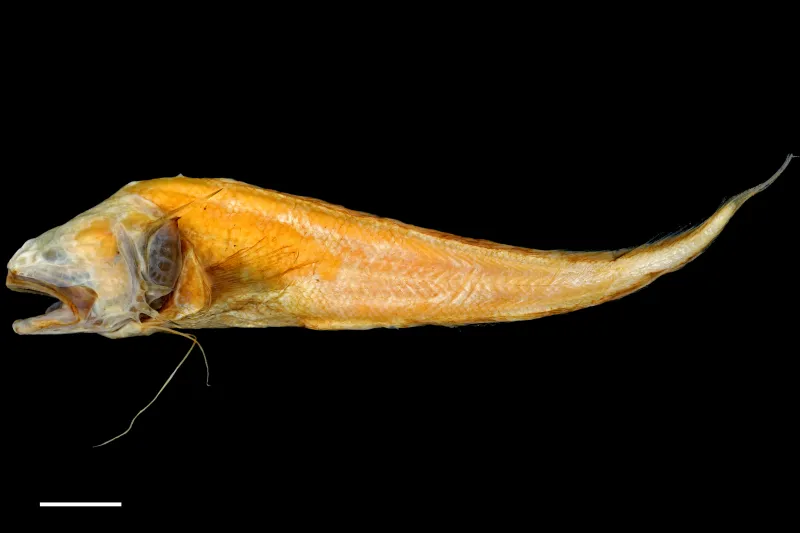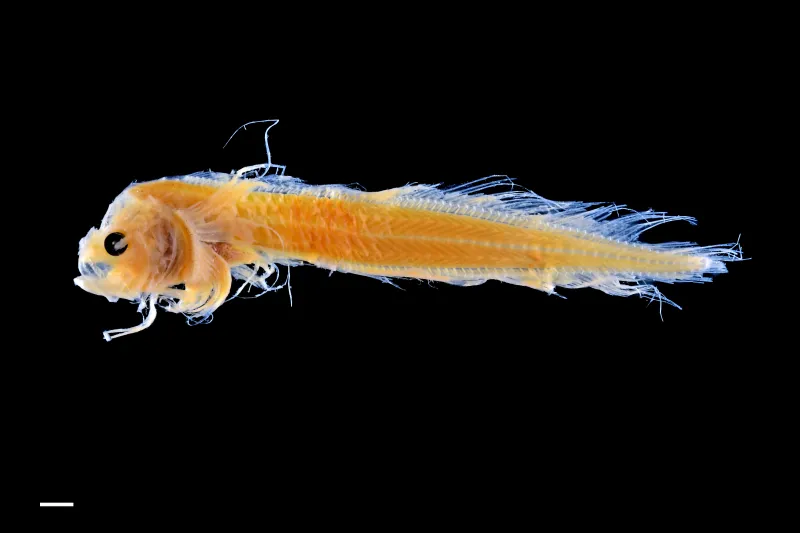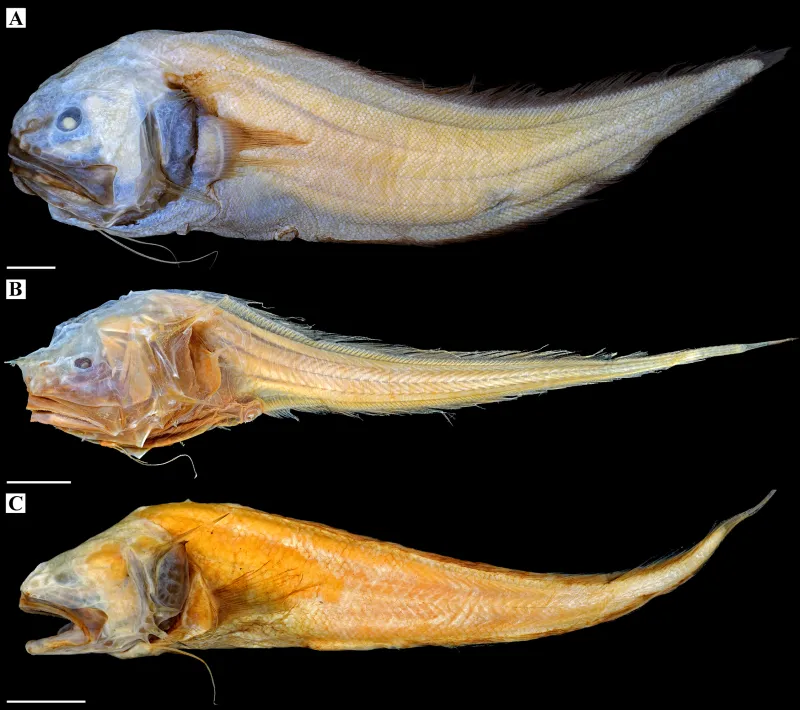Blackwater divers dive in the black of night. Descending to nearly 100 feet (30 m), divers sweep with lights to illuminate tiny organisms, many of which have risen from the deep ocean to feed under the cover of darkness. Most of these divers are also photographers, and as they encounter beautiful and bizarre creatures, they are able to capture mesmerizing photographs of organisms few people in the world have seen alive. Larvae of the Bony-eared assfish are one of the most sought-after species due to their beauty.
Revealing the Family Ties of Cusk-Eels
Deep in the ocean, cusk-eels lurk along the muddy bottom. With bulbous heads and elongated tails, some are homely creatures with an almost ghost-like appearance. One species, the Bony-eared assfish (Acanthonus armatus), is literally named after the rear end of a donkey. It was, therefore, quite a shock when scientists discovered that a tiny fish with beautiful billowing and fanning fins was the larval stage of the assfish.
Working with blackwater photographers, scientists are beginning to piece together relationships between the seemingly unrelated adult fishes and their larvae. A larval fish can appear completely different from its adult form, to the point where it is near impossible to connect the two just by sight. The Bony-eared assfish is only one species, and it wasn’t until 1981 that the larva and adult were linked. But for many cusk-eels, the larval stage is still a mystery. That was the case for the Gargoyle cusk (Acanthonus myersi) until photographers snapped a photo of what they thought was a colorful baby Bony-eared assfish . After further investigation, the larva was a devilish orange and yellow and had more long fin rays than expected.
In a recent study, Smithsonian scientists have now confirmed, the colorful larva is actually a baby Gargoyle cusk. This discovery is reminiscent of a 1960s observation that the adults of Bony-eared assfish and Gargoyle cusk have similar anatomies. The evolutionary relationships of the two were questionable at the time, though now that the two larvae are known to also look alike, scientists dug a little deeper. After comparing the two species’ anatomy and genetics in this most recent study, it appears that the two are, in fact, close relatives. A third species, an Indian Ocean cusk-eel known as the Spiny blind brotulid (Acanthonus hextii), appears to also be a close relative, with similar larval and adult anatomy. Thanks to the eagle eyes of blackwater scuba divers and photographers, we now know these three species of cusk-eels are all assfishes.


